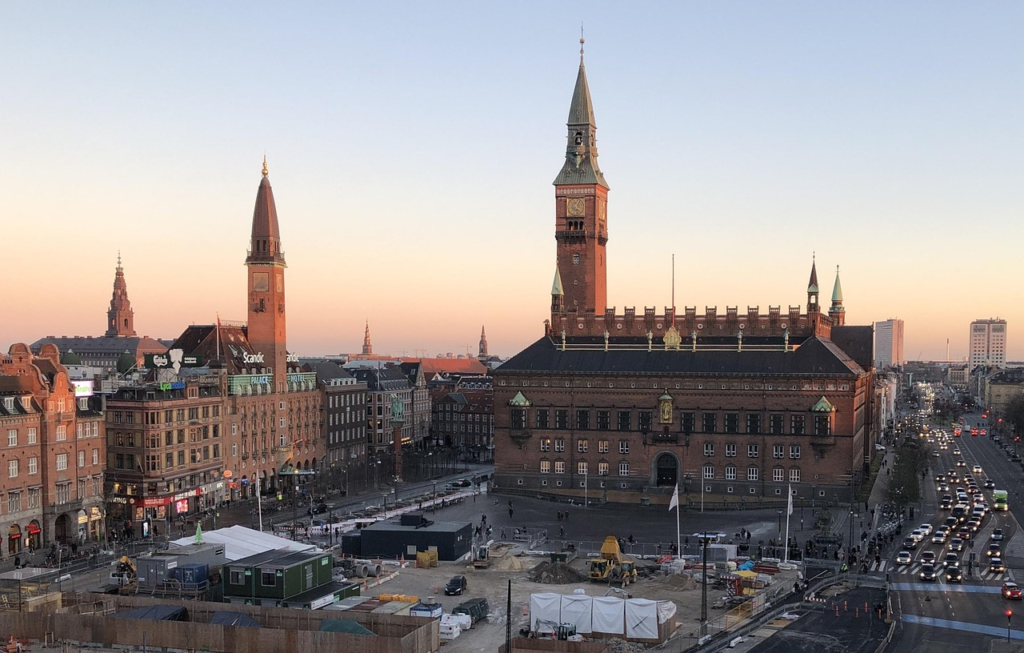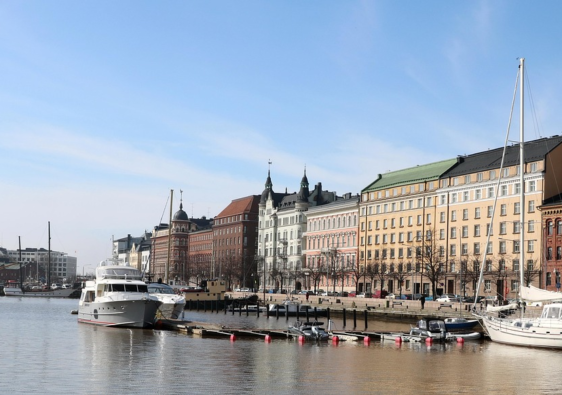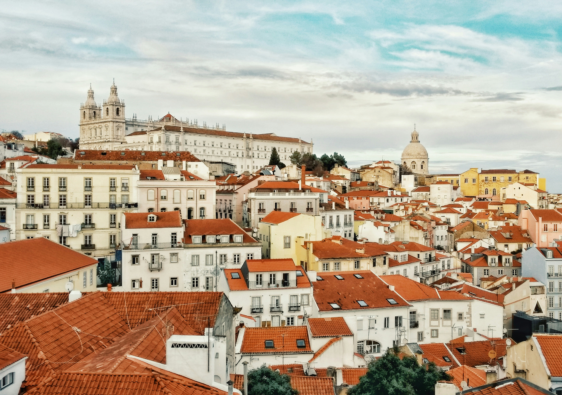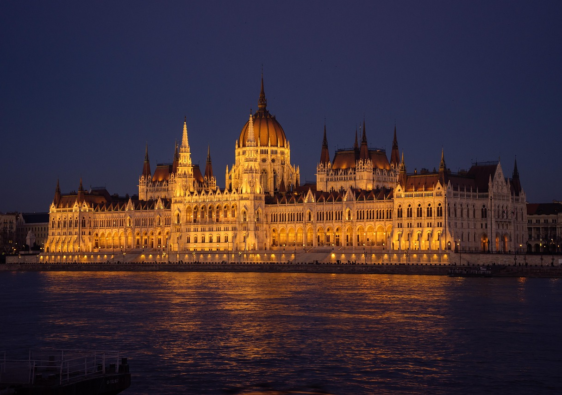Overview
For a small capital, it punches far above its weight: world-class food, progressive design, and an effortless sense of style that cities everywhere try (and usually fail) to copy. Copenhagen is perfect for travellers who value atmosphere over chaos, and substance over spectacle.
Quick Facts
- Location: Eastern Denmark, Scandinavia, spread across islands and canals
- Language: Danish (English widely spoken)
- Currency: Danish Krone (DKK)
- Population: ~650,000 (metro ~1.4 million)
- Airport: Copenhagen Kastrup (CPH),15 minutes to city centre by metro
- Timezone: CET (Central European Time, GMT+1)
- Best For: Design lovers, cyclists, foodies, hygge-seekers, and slow travellers
When to Visit

Spring (April–May)
The city wakes up slowly from winter, and you can feel it in the air. Outdoor cafés start spilling onto the pavements again, tulips brighten the parks, and the locals look genuinely relieved to see the sun. It’s still jacket weather, but with longer days and fewer tourists, it’s a lovely time for a relaxed first visit.
Summer (June–August)
This is Copenhagen at its most alive. Long, golden evenings stretch past 10pm, the canals fill with swimmers, and the city hums with festivals, food markets, and rooftop bars. Everyone seems to be outside, cycling, picnicking, or simply enjoying being in the light. It’s also the most expensive and crowded time, so book early if you’re coming then.
Autumn (September–October)
The energy softens. Leaves turn the city copper and gold, cafés glow with candles again, and there’s a calm, local rhythm after the summer rush. It’s the season for slow travel, museum afternoons, cosy dinners, and that unmistakable Danish hygge atmosphere taking over once more.
Winter (November–February)
Cold, yes, but magical. Christmas markets light up Tivoli Gardens, and snow occasionally dusts the rooftops. It’s dark early, but Copenhagen knows how to make darkness feel warm. If you don’t mind the chill and want to see the city at its most atmospheric, it’s worth it.
Getting Around
- Getting Around
Copenhagen might just be the easiest city in Europe to navigate, and that’s saying something. Compact, flat, and beautifully organised, it’s a place that feels designed for movement. You won’t need a car here, in fact, having one would be more hassle than help.
By Bike
This is the way to see the city. Copenhagen’s bike lanes are wide, safe, and respected, locals commute in suits, dresses, and even with kids in tow. You can rent easily through Donkey Republic or Bycyklen (the city’s electric bike-share). The city’s scale means you’re rarely more than 15 minutes from anywhere worth visiting. Just remember: cyclists follow the rules here, so signal, stay right, and don’t block the lanes when you stop to take photos (tempting, but risky).
Public Transport
Efficient, spotless, and simple. The Metro runs 24/7 and connects the airport to the centre in under 15 minutes. Buses and trains are equally reliable, all integrated into one ticket system, use the Rejseplanen app to plan routes or buy tickets. If you’re visiting for a few days, the Copenhagen Card is worth it: unlimited travel plus free entry to dozens of attractions.
On Foot
The city centre (Indre By) is compact and easily walkable. You can wander from Nyhavn to Tivoli to Nørreport without ever needing transport. Walking here feels relaxed, no honking traffic, no stress, just pastel façades, canals, and plenty of spots to stop for a pastry break.
Download Google Maps or Citymapper offline and combine walking with the metro or a bike rental, it’s the perfect hybrid for exploring like a local.
Top Neighbourhoods to Explore

Indre By (City Centre)
This is classic Copenhagen — postcard-perfect streets, royal palaces, designer boutiques, and cobblestones that have seen centuries of history. It’s where you’ll find Nyhavn, the colourful canal lined with cafés, and Strøget, one of Europe’s longest pedestrian shopping streets. Despite being touristy, it still charms you — especially early in the morning before the crowds arrive.
Vesterbro
Once a rougher part of town, Vesterbro is now the city’s trendiest playground. Think industrial-chic bars, coffee roasters, and natural wine spots set inside old warehouses. The Meatpacking District (Kødbyen) is the heart of it all, packed with restaurants, art spaces, and people who seem effortlessly cool. It’s where Copenhagen’s creativity and nightlife come alive.
Nørrebro
Copenhagen’s most multicultural and youthful area, full of energy, colour, and street art. Here, kebab shops sit beside record stores and craft beer bars. Walk along Jægersborggade, a narrow street that captures the neighbourhood perfectly, independent shops, bakeries, and a sense of community you don’t often find in capitals. It’s edgy but warm, authentic and proudly different.
Christianshavn
Built on a network of canals, Christianshavn feels almost like a miniature Amsterdam, but with a distinctly Danish calm. Colourful houses, boats bobbing by, and tucked-away cafés make it ideal for a slow afternoon. It’s also home to Freetown Christiania, the city’s famous alternative enclave. Go with an open mind, it’s a mix of art, activism, and counterculture that’s been part of Copenhagen’s story for decades.
Østerbro
Leafy, elegant, and more residential, Østerbro offers a slower pace. It’s where locals jog along the lakes, families fill the parks, and design stores sit beside cosy brunch spots. Stop by The Little Mermaid, yes, it’s smaller than you expect, but the area’s charm makes up for it. It’s also near Kastellet, a beautiful star-shaped fortress that’s perfect for a quiet walk.
Must-See Sights & Experiences
Nyhavn
Yes, it’s on every postcard, and yes, it’s worth it. The row of candy-coloured buildings along the canal captures everything people love about Copenhagen: warmth, history, and charm. Go early for quiet photos or at golden hour when locals crowd the edges with beers and conversation.
Tivoli Gardens
Right in the heart of the city, Tivoli is part amusement park, part time machine. Opened in 1843, it inspired Walt Disney himself, but it’s still uniquely Danish, mixing nostalgia with elegance. The lights at night feel almost cinematic; even if you don’t do rides, it’s worth an evening stroll.
Rosenborg Castle & The King’s Garden
A fairytale-like Renaissance castle surrounded by manicured gardens. Inside you’ll find the Danish crown jewels, but the real magic is outside in summer, when locals sprawl across the lawns for picnics and sunbathing.

The Round Tower (Rundetaarn)
Built in the 17th century, this spiral-ramp tower offers panoramic views over the old town. It’s one of those spots that feels delightfully analogue, no elevator, no rush, just a slow climb that ends in one of the best vantage points in the city.
Amalienborg Palace
Home to the Danish royal family, this elegant square of palaces is where you can catch the daily Changing of the Guard. It’s understated but regal, much like the city itself.
Christiansborg Palace
Set on its own little island, Christiansborg houses the Danish Parliament, Supreme Court, and Royal Reception Rooms, but also a free tower with sweeping city views. Few places combine politics and beauty so gracefully.
Canal Tour
It’s touristy, but for good reason. From the water, Copenhagen looks different, calmer, broader, and more connected. You’ll glide past landmarks like the Opera House and Christianshavn’s canals while learning snippets of history you’d never catch on land.
Hidden Gems
- Assistens Cemetery: Resting place of Hans Christian Andersen, but also a peaceful park where locals jog and picnic.
- Superkilen Park: A vibrant, design-driven public space in Nørrebro that celebrates global diversity.
- Reffen Street Food Market: An open-air food hub built from shipping containers — craft beers, world food, and sunset views across the harbour.
Where to Eat, Drink & What to Try

Dishes to Try
You’ll find Danish cuisine to be all about comfort, freshness, and balance, rustic yet refined.
- Smørrebrød: Open-faced rye sandwiches topped with everything from pickled herring to roast beef and remoulade. Try them at Aamanns or Hallernes Smørrebrød in Torvehallerne.
- Frikadeller: Danish meatballs, juicy, herby, and often served with potatoes and gravy. You’ll find great versions at local taverns like Schønnemann.
- Flæskesteg: Traditional roast pork with crispy crackling, often served at Christmas but available year-round at cosy restaurants.
- Rød pølse: Bright red Danish hot dogs, grab one from a street stand like DØP near Round Tower; they’re better than you’d expect.
- New Nordic dishes: Rooted in local, seasonal ingredients, think fermented vegetables, foraged herbs, and creative plating. Try Høst or Vækst for a refined introduction.
And don’t miss the pastries, especially the ones Danes never call “Danish.” Go for a kanelsnegl (cinnamon roll), spandauer (custard pastry), or tebirkes (poppy-seed roll) at Andersen Bakery or Hart Bageri.
Drinks to Try
Danish drinking culture blends tradition and innovation, much like everything else here.
- Craft beer: Copenhagen’s scene is massive. Try Mikkeller, Warpigs, or BRUS for local brews, anything from crisp lagers to hazy IPAs.
- Akvavit: A classic Scandinavian spirit flavoured with dill, caraway, or fennel — often sipped cold alongside smørrebrød.
- Gløgg: Warm spiced wine served during winter (especially around Christmas markets).
- Natural wine: The city is obsessed with it, you’ll find it everywhere from Ved Stranden 10 to Pompette in Nørrebro.
Where to stay
Best Areas to Stay
- Indre By (City Centre): Ideal for first-timers. You’ll be walking distance from Nyhavn, Tivoli, and the main sights. Great mix of history, cafés, and convenience, though expect slightly higher prices and tourist crowds.
- Vesterbro: Trendy, young, and full of life. Perfect if you like staying near cool restaurants, bars, and creative energy. The Meatpacking District comes alive at night, but it’s not chaotic, just effortlessly fun.
- Nørrebro: For those who like authenticity over polish. It’s diverse, colourful, and local, great food, street art, and community vibe. Best if you want to feel like a temporary resident rather than a tourist.
- Christianshavn: Dreamy canals, boats, and a slightly slower pace. Great for couples or solo travellers who love character and charm.
- Østerbro: Calm, leafy, and residential, ideal for families or anyone wanting quiet mornings and long lake walks.
How Long to Spend
Copenhagen is one of those rare cities that feels complete in just a few days, yet still gives you a reason to come back. It’s compact, easy to navigate, and designed for slow exploration, not rushing between sights.
If it’s your first visit, three to four days is the sweet spot. That gives you enough time to wander the main neighbourhoods, see the big sights, and still spend a few hours doing nothing, which, in Copenhagen, is part of the experience. The magic here isn’t in cramming your days full; it’s in letting the city’s rhythm catch up with you.
If you can stretch it to five days, you’ll have time to really sink in: rent a bike, explore Nørrebro’s street art, take a canal swim, or spend an afternoon museum-hopping without looking at the clock. You could even sneak in a short day trip across the Øresund Bridge to Malmö, Sweden, just for the novelty of crossing countries in under an hour.
For those on tighter schedules, a weekend break still works beautifully, Copenhagen Even 48 hours is enough to stroll Nyhavn, sample smørrebrød, and catch sunset by the canals.
Local Tips & Etiquette
Respect the Bike Lanes
Bikes rule here, they’re not a trend, they’re a lifestyle. Never walk or stand in the bike lane, and always check both ways before crossing (yes, even on quiet streets). If you rent a bike, signal with your hands and keep a steady pace. Locals appreciate confidence over chaos.
Go Cashless
Denmark is practically cash-free. Cards (and contactless payments) are accepted everywhere, even at small kiosks and food stalls. You’ll rarely need cash, and some places won’t accept it at all.
Basic Phrases
Most people speak excellent English, but using a few Danish words is always appreciated:
- Tak – Thank you
- Hej / Hej hej – Hi / Bye
- Skål – Cheers
- Undskyld – Excuse me / Sorry
Even a small effort earns big smiles.
Sundays
Many shops close or open late on Sundays. Plan ahead, and use the day to do as locals do: brunch, bike rides, and lazy park strolls.
Weather
The weather changes quickly, even in summer. Layers, a light waterproof jacket, and a sense of humour go a long way. When in doubt, do as the Danes do: shrug, smile, and carry on cycling through the drizzle.
Day Trips & Extensions

One of the best things about Copenhagen is how much you can explore just beyond it. The trains are fast, the towns are charming, and in under an hour you can swap city streets for castles, cliffs, or even another country. Here are some easy (and worthwhile) escapes.
Helsingør & Kronborg Castle
Just 45 minutes by train north of the city, Helsingør is home to Kronborg Castle, the setting of Shakespeare’s Hamlet. The fortress sits right by the sea, dramatic and windswept, and feels like stepping straight into a Scandinavian legend. Wander through the grand halls, then grab a coffee by the harbour before heading back.
Roskilde
Once Denmark’s capital, Roskilde is a mix of Viking history and small-town charm. The Viking Ship Museum lets you see, and even sail, reconstructed ships that once roamed these waters. Pair it with a visit to Roskilde Cathedral, a UNESCO World Heritage site where Danish kings and queens are buried. It’s an easy half-day trip, just 25 minutes by train.
Louisiana Museum of Modern Art
Even if you’re not into art, go for the setting. Perched on the coast about 35 minutes north of Copenhagen, Louisiana combines striking architecture, sculpture gardens, and sea views that’ll stop you mid-sentence. The exhibitions are world-class, but it’s the calm, creative atmosphere that stays with you.
Malmö, Sweden
Yes, you can visit another country for lunch. Hop on a train across the Øresund Bridge (about 40 minutes) and you’re in Malmö, Sweden’s laid-back, artsy neighbour. It’s a fun, low-effort way to add another stamp to your trip: stroll the old town, check out the Turning Torso, and grab fika (Swedish coffee + cake) before heading back for dinner in Copenhagen.
Møns Klint (for the extra adventurous)
If you’ve got an extra day or two, rent a car and drive two hours south to Møns Klint, Denmark’s iconic white chalk cliffs. They rise dramatically above the Baltic Sea, surrounded by forests and hiking trails. It’s one of the most beautiful natural spots in the country, and worth the trip if you’re craving nature after the city.





